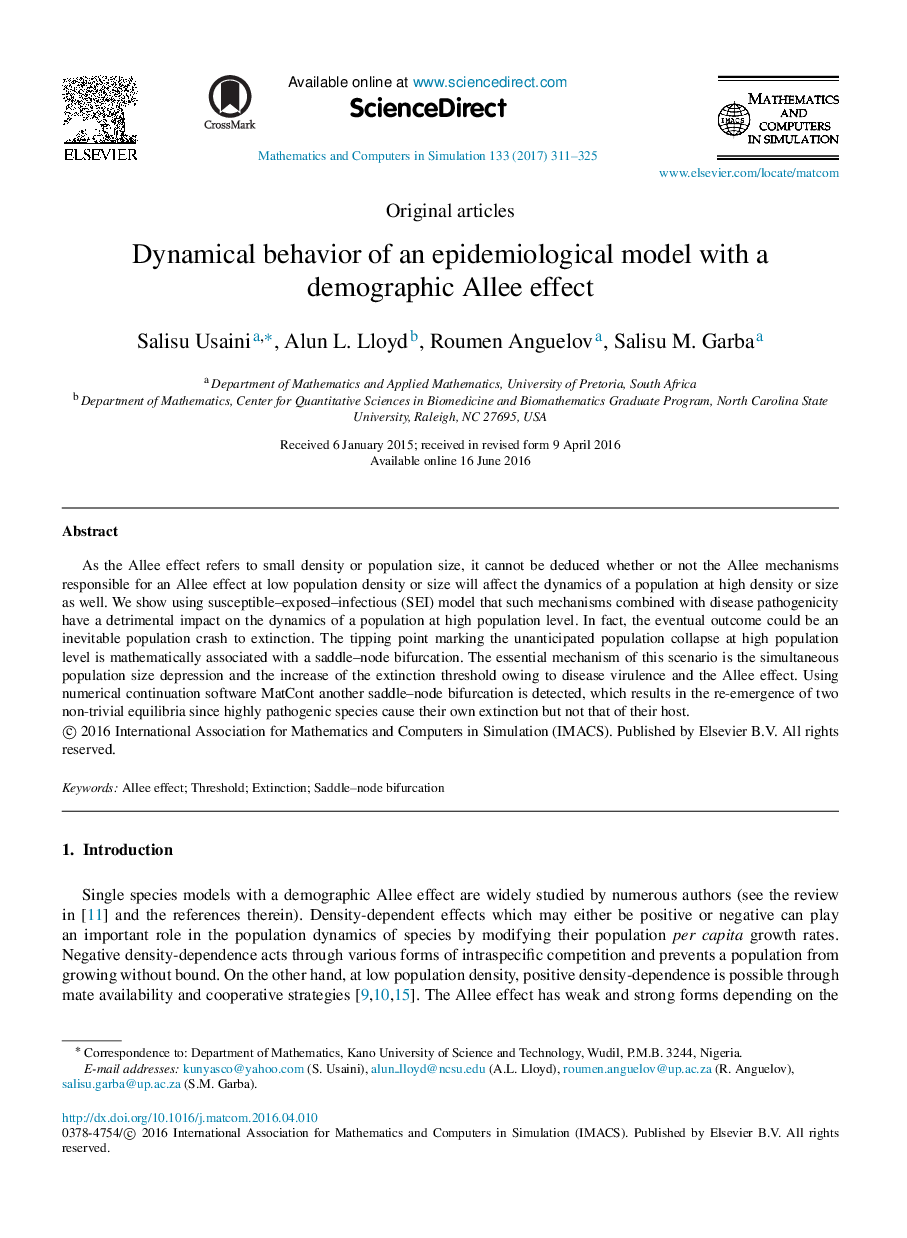| Article ID | Journal | Published Year | Pages | File Type |
|---|---|---|---|---|
| 5128184 | Mathematics and Computers in Simulation | 2017 | 15 Pages |
As the Allee effect refers to small density or population size, it cannot be deduced whether or not the Allee mechanisms responsible for an Allee effect at low population density or size will affect the dynamics of a population at high density or size as well. We show using susceptible-exposed-infectious (SEI) model that such mechanisms combined with disease pathogenicity have a detrimental impact on the dynamics of a population at high population level. In fact, the eventual outcome could be an inevitable population crash to extinction. The tipping point marking the unanticipated population collapse at high population level is mathematically associated with a saddle-node bifurcation. The essential mechanism of this scenario is the simultaneous population size depression and the increase of the extinction threshold owing to disease virulence and the Allee effect. Using numerical continuation software MatCont another saddle-node bifurcation is detected, which results in the re-emergence of two non-trivial equilibria since highly pathogenic species cause their own extinction but not that of their host.
